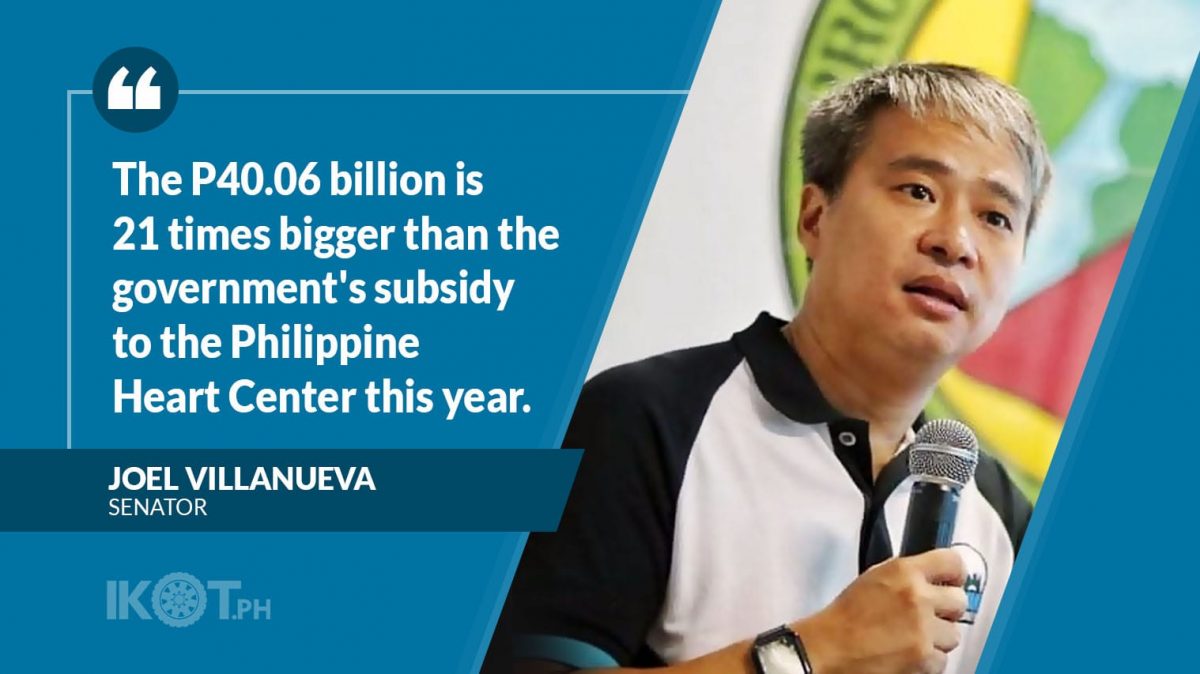The government will be “saving billions, educating millions, employing thousands” should it equip its buildings, including schools, with solar power systems, Senator Joel Villanueva said.
Villanueva made the call as he noted the big jump in the government’s electricity bill, from P34.58 billion in 2017 to P40.06 billion in 2019.
“To put this in perspective, the P40.06 billion is 21 times bigger than the government’s subsidy to the Philippine Heart Center this year,” the veteran legislator explained.
The P5.5 billion surge in the government’s electricity bill in just two years “should jolt us into finding cheap and clean energy sources,” according to the seasoned lawmaker.
As a tropical country, the reelectionist senator said “there is more sun in the Philippines,” citing the Department of Energy’s report that the average solar radiation ranges from 128 to 203 watts per square meter.
“This is equivalent to a potential power generating capacity of 4.5-5.5 kWh per square meter daily,” he noted.
“Going solar will spare the country from oil price shocks, like the one triggered by Russia’s invasion of Ukraine.”
“Going solar will spare the country from oil price shocks, like the one triggered by Russia’s invasion of Ukraine,” Villanueva said.
Tapping this “locally abundant clean source of energy” will also be the country’s contribution to the global fight against climate change, he added.
Villanueva then urged the government to invest, for a fraction of the hundreds of billions it borrows for big infrastructure projects, in solar power, “the low hanging fruit that yields high returns”.
“A government solar power program will create more jobs for Filipinos.”
The chair of the Senate Committee on Labor, Employment, and Human Resource Management said that thousands of jobs will be created by pivoting to solar power.
“A government solar power program will create more jobs for Filipinos. This could be part of the government’s employment recovery plan to recuperate from the effects of the pandemic,” he said.
One candidate for the installation of solar photovoltaic systems is a school building, either on rooftops or on the ground, Villanueva said.
“This will hit many birds with one stone. First, it can power science and tech-voc equipment. Second, it can serve as a hands-on science laboratory. Third, it can create community employment. Fourth, it is a model that shows how solar power works,” he said.
Villanueva previously pushed for solar power projects during his stint as Director-General of the Technical Education and Skills Development Authority (TESDA).
Some of his initiatives are the establishment of the Green Innovation Technology Center at the TESDA Central Office, and the implementation of training programs for photovoltaic systems design, installation, and servicing.
He added that micro, small, and medium enterprises in the renewable energy industry can be capacitated under Republic Act No. 11230 or the Tulong Trabaho Law.
Villanueva is the principal sponsor and principal author of the said law.
Around 58.2 percent of the country’s power generation is still reliant on fossil fuels, largely from coal. In contrast, solar and wind feed only 3.7 percent to the grid.


